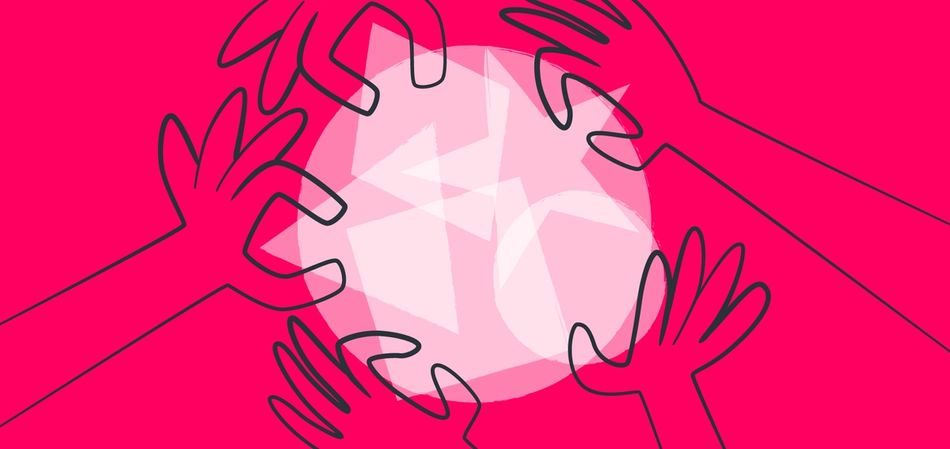
I recently caught up with Sarah Alpern to talk about building culture on teams. Sarah is an incredibly accomplished designer. She managed designers at eBay, led design for Wealthfront, and is currently the VP of Design at LinkedIn. We discuss whether culture is a top-down or bottom-up endeavor, and the importance of building a diverse, empowered team.

BRADEN: How would you describe the culture here at LinkedIn?
SARAH: The company is very mission-focused. The vision of LinkedIn is to create economic opportunity for every member of the global workforce, which is powerful.

But the number one operating priority is talent. That means focusing on growing the talent on the team, and also building a world-class team. This priority comes across in almost every aspect of the company, like how we’re investing in people. We have days once a month, where yes, you can just go and invest in yourself. It’s fantastic.
Another huge piece of the culture here is transformation. It’s about bringing in people with a growth mindset and potential, and then helping them transform themselves by being at this company.
BRADEN: Often times people talk about culture as something that just emerges. But you’ve also talked about culture as being intentional. Do you think culture is formed top-down or bottom-up?
SARAH: I've been debating this.
People have different definitions of culture. Here’s the one that resonates most for me. I think culture is like a set of principles and attitudes. The unique people that you bring into your company, and their unique personalities, come together towards shared practices.
There are things that are intentional, but I also think it’s very ground-up. I was talking to my husband about this today, about how the startup that he used to be at was all about chocolate. One of the founders brought chocolate a few times and it became a tradition. But the cultural value was really around having a shared place to bond, have fun, and really just belong.
BRADEN: Chocolate sounds like a great tradition! What kind of traditions help form the culture on your team?
SARAH: We go huge at Halloween. People come and they dress up. This year and we did a costume contest and people went crazy with these team costumes. But it's not just Halloween. It rolls up into more of a cultural tenant that we care about being together. We invest in having fun together.
There are always hard times in projects. If you get to know each other, and you have empathy for each other's backgrounds, you're going to be able to get through those hard times. And you're going to be able to get through it in a much better way. The work will get done better. And people will be able to do a better job if they're having more fun at work.
So that part comes from the company. "We invest in fun." But then the uniqueness of the fun must come from the team. I feel strongly about empowering the team and not having it come from leadership. It's just so much more authentic if it's coming from the team.
We have a group of people who are culture volunteers. It wasn’t my idea, they started super organically, and call themselves the “Neighborhood Association”. They wanted a budget, and I said “Great. Here.” So again, that's an example of top-down where we say we invest in this, and we put money behind it. But it’s also bottom-up. It’s coming from the unique personalities on our team.
BRADEN: With so much to do, it must be hard to prioritize things like culture. Why do you do it?
SARAH: It is not hard, actually. Because culture is so ingrained into the company. Why I do it? I believe strongly that we're going to be able to hire and retain top talent by having a good culture. It’s absolutely critical.
If we say, "Go heads down and work all weekend." That is only short term thinking. Culture is important for the quality of the team and for the long-term quality of the products that we build.
BRADEN: If you were part of a company where culture wasn’t valued, how would you advocate for it?
SARAH: It depends on who I'm talking to. If I'm talking to somebody who is truly empowered but is wavering, then I would explain there's literally research that shows: having friends at work means that people are going to do better work. And they’re going to stay longer, too.
Sometimes you have to up-level to, "Why does culture matter?" But generally, I think people share the same goal of being able to hire great talent and be able to retain them. Assuming you have that shared goal, I think you can have a lot of great conversations.
When people know the people that they're working with on a deeper level than just sitting across the table, they can handle the harder times better. Which means fewer escalations, which means less churn.
BRADEN: When you build a strong culture, people are happier at work. Are there other benefits?
SARAH: A big part of our culture is also diversity and inclusion. We are not perfect by any means. But it’s a huge goal for the company. A big reason for this is that our vision is to create economic opportunity for every member of the global workforce. But to successfully design for every member of the global workforce, we need to actually have a diverse team.
We're in a world where we can't just design for the happy path. We're in a world where you can have unintended consequences where you’re so focused on helping one set of people that other groups might be hindered. I need people on the team that are looking for that. I need people who have different perspectives and are comfortable raising their hand.
If a team is made up of 20 people just like me, there's no chance we're going to build something that works and emotionally resonates with different people, with different abilities, and different cultures all around the world.
So we have to be able to hire people that are different from us. And we have to be able to create an environment where they feel comfortable and empowered to share their unique perspectives.
But good culture is relative. Every team has to decide what good culture is for them. I'm happy to share what I think it is for us and what we're working on.
For me, good culture is when people feel empowered to speak up. It's not that everybody's happy and having fun all the time. It’s that people feel empowered to share great ideas, to contribute early at a strategic level, and not just execute on other people's vision. Good culture exists when people raise their hand when they disagree with something.








